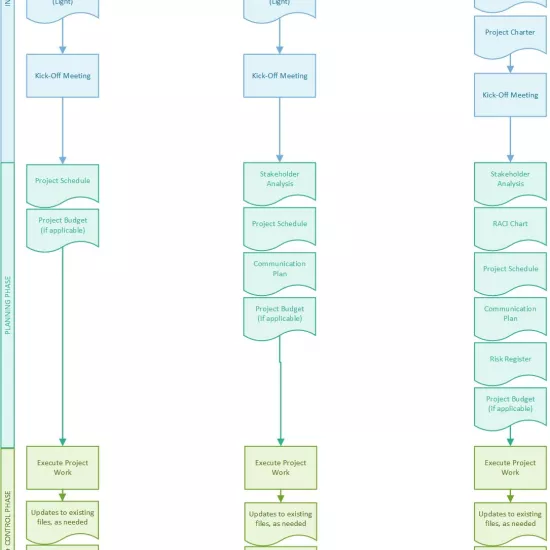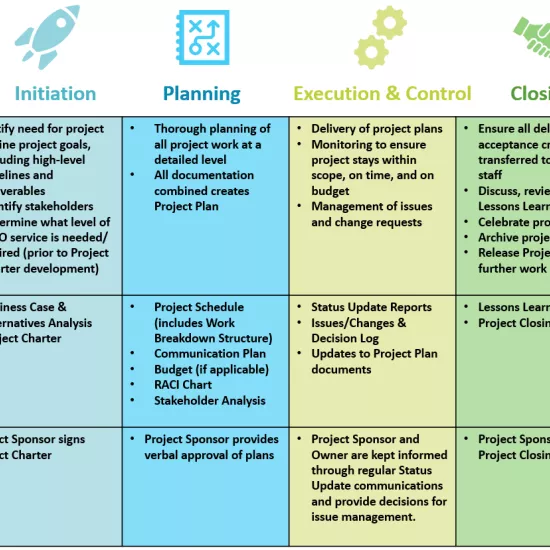The Project Management Lifecycle has four phases. The PMO is developing its intake process and will update any information regarding project ideation and intake, prior to the Initiation Phase, as we refine these processes over the next year.
Initiation
This is the phase where your idea becomes established as a formal project. In this stage the project team is assembled; the rationale for the project and the high-level goals and objectives are defined; scope, required resources, project deliverables, and timelines are broadly determined; key stakeholders are identified, and more. The major deliverable of the Initiation Phase is the Project Charter, which establishes the project and provides its first formal definition.
Planning
This is the phase where you create an effective plan to achieve the goals and objectives of the project. Building off the Project Charter, you will create a detailed project schedule, budget (if applicable), scope, and further documentation to guide the Project Team. This will be achieved through determining the acceptance criteria for the deliverables of your project and the work breakdown structure (or list of tasks) required to complete the project work. The sum of your various documents creates your Project Plan.
It is often said that 80% of a project’s success depends on proper planning. Careful project planning is key to minimizing issues during the Execution Phase. When planning your project work be sure to consider the full scope of what will be handed over to the Project Sponsor/Customer at the close of the project. For example, if you are creating a new tool for your Project Sponsor, they will likely require an instruction manual on how to use the tool and training provided to all staff who will be using it. It is important to include the full scope of the deliverables in your project plans. You will also want to identify what is out of scope. For example, if you are creating a new tool for your Project Sponsor, but the expectation is that the end-users will be maintaining the tool, be sure to include that “tool maintenance” is out of scope for your project.
Execution and Control
This is the phase where you manage the planned work of the project and track project progress to ensure the project stays on-schedule and within scope and budget. You will work to identify issues and risks and mitigate them as needed. Throughout this phase you will hold regular meetings with the Project Team and provide regular status reports to the Project Sponsor and key stakeholders. Changes to the project scope, timeline, or budget should be approved by the Project Sponsor and documented in the Change Log.
Closing
This is the final phase, where you formally end the project by ensuring all deliverables are handed over to the client; finalize all project documentation, including the Closing Report and Lessons Learned; celebrate project successes; and release the Project Team to return to their normal work. Remember that projects are by definition temporary in nature and must be completed. Properly closing the project signals to all stakeholders that all project work is complete and that the Project Team is released from any further work on the project.


